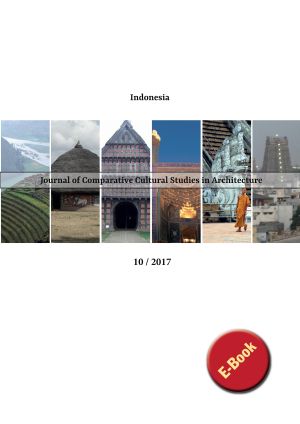Renate Bornberg
JCCS-a Indonesia 10/2017

This issue of jccs-a focusses on the transformation of traditional architecture in Indonesia. Indonesia is the world largest Archipelagic state with more than 17.500 islands, and a population of 270 millione people living on more than 6000 islands. This led to a cultural diversity of the archipelago, with many cultures being alive for more than 2000 years. Influences came from India, China, Melanesia, Austronesia, but also from Europe and the Middle East. Thus Indonesia has a complex cultural identity with many small cultural entities. However, recently traditional architecture is replaced by new building types as well as new materials. Until recently, foreign cultural influences were integrated into one’s own tradition. This has changed in the last few decades, and an international architectural building style is massively built all over Indonesia, transforming not only traditional ground floor solutions of houses, but also the way of living together. Moreover, the use of concrete, steel and glass is also an environmental issue: these materials have to be imported, and living in the sealed buildings causes the massive use of air conditioning, i.e. the use of electric energy. On the other hand, traditional buildings are created in a way that electric air conditioning is not necessary, which is essential in the light of climate change.
In this context, this issue of jccs-a highlights challenges and research ideas of the transformation of the built environment in Indonesia: Old traditional building constructions should be brought to the attention of people, so that these traditional constructions can be integrated into contemporary architecture and urban environments in Indonesia.
These challenges are all the more complicated because Indonesia has a multitude of different local traditions that would have to be taken into account.